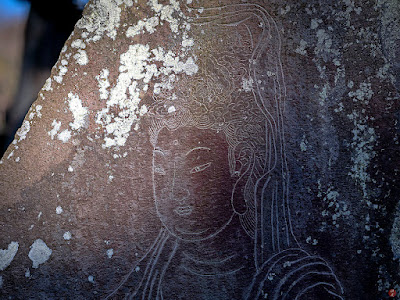In the "Garden of a Hundred Kanzeon Bosatsu (Avalokitaisvara)" of Engaku-ji Temple, there are moss-covered carved stones with the line drawing of Byakue Kannon, namely white-robed Kanzeon Bosatsu (Buddhist deity of compassion).
This white-robed Kannon is depicted in the posture of sitting and meditating on a rock in a clear stream in the middle of Mt. Potalaka (Mt. Fudaraku). It is said that this sacred mountain is the Pure Land where Kannon lives. His unsullied white robe symbolizes his sacred purity and infinite compassion.
Kannon Bosatsu is said to compassionately watch over any sorrowful event in this our world, to transform into any of his 33 figures for responding to the prayers of those who seek his salvation, and to save all living beings from all kinds of sufferings and agonies.
In the Kamakura and Muromachi periods (the 12th to 16th century), Zen monks, who were highly skilled in painting, created many Suiboku-ga (ink and wash paintings) of this white-robed Kannon to symbolically represent the limitless compassion and the ultimate state of mediation of their Zen Buddhism.

No comments:
Post a Comment